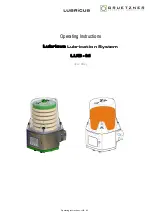
6 Earthing and shielding
| Earthing of shielded cables
19
2484940000/00/02.2017
Manual UR67-Multiprotocol
These types of interference usually occur mixed together, but
they can be categorised as follows:
–
Electromagnetic fields
–
Ripple voltage (50 Hz)
–
Lightning
–
Interference pulses (current, voltage)
–
Transient surge voltages
–
Radio interference
–
ESD (electrostatic discharge)
–
Burst
–
Mains feedback
Another area of concern as regards shield
contact is the “flow” within the conductor. Tem
-
perature changes caused by the current lead
to changes in the conductor cross-section. A
rigid contact can therefore only be partially
effective. A self-adjusting contact is what is
really required. Weidmüller's clamping bracket
products (KLBÜ series) provide the perfect so
-
lution to meet this challenge..
Use of a clamping bracket
Effective shielding
It is important that the shielding is not positioned on the
earth of the connected component, but on the protective
earth. In the case of components that are installed in a metal
housing, the shielding must be positioned to this housing. If
no earthed housing is available, the shielding is positioned
on a separate earth.
When installing ground connections on shielding, it is gen-
erally also important that no earth loops are created. The
smaller the earth loop, the less the danger of the induction
of interference voltages. It is therefore most suitable to have
a purely neutral-point installation.
The following sketches show the possible shielding connec-
tions to protective earth.
A one-sided connection of the shielding protects against ca-
pacitive coupling of interference voltages.
System 1
System 2
1
H
F
1M
M
∬
If you use a two-sided shielding connection, make sure that
compensating current (different earth potentials) does not
flow through the cable shield.
System 1
System 2
If you wish to avoid the disadvantages associated with creat-
ing an earth loop with two-sided shields, it is recom mended
you connect one side of the shield through a high imped
-
ance.
System 1
System 2
For longer lengths of shielded cables, such as if a sensor
must be added to a control panel, a potential difference
between both end points must not be ignored.
However, such shield conductors are relatively expensive
and also require more time in working with them. Another
possibility would be to place an additional voltage equalising
cable between the measurement location and the control
panel. The shield can then be hooked up on both sides.
















































